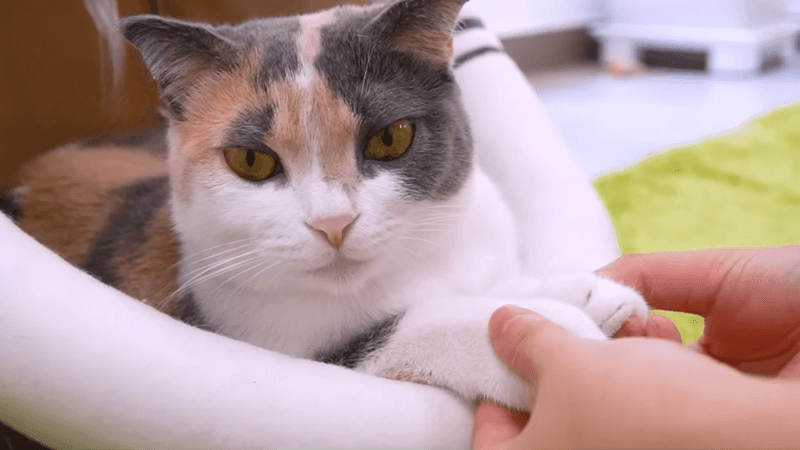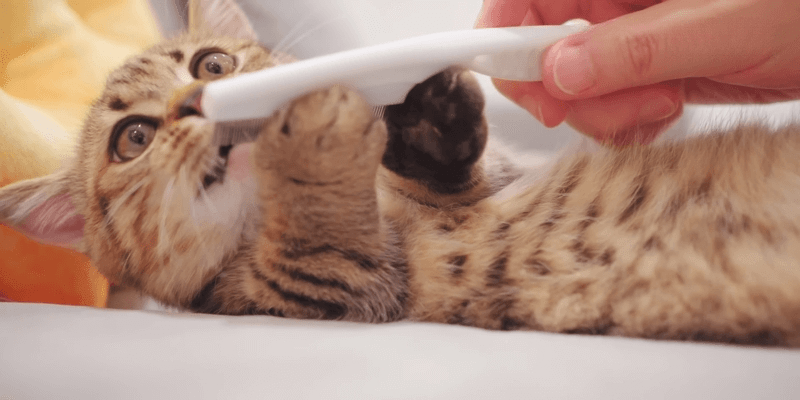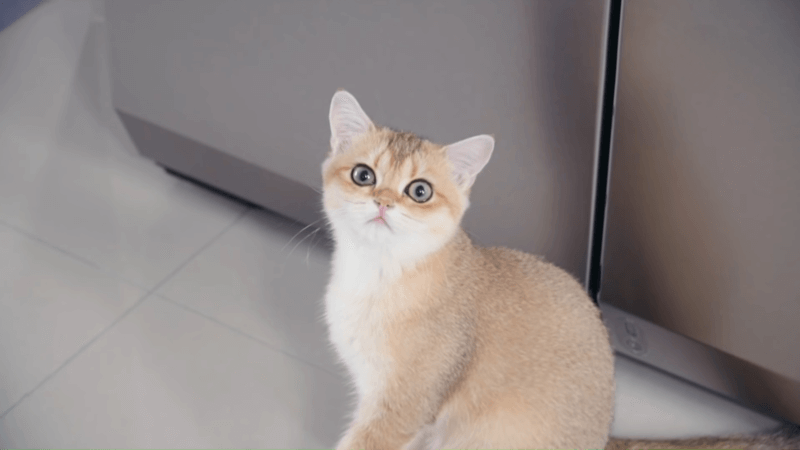No products in the cart.
CBD for cat pain offers a gentle and natural remedy to ease the discomfort experienced by our beloved feline companions, whether it’s due to arthritis, injuries, or dental problems. In this blog, we will explore the potential benefits of CBD for feline pain relief, how to tell if a cat is in pain, what can you give a cat for pain relief, learn how to identify the signs of pain in cats and discover effective tips for applying CBD oil for cat pain treatment.
Understanding how CBD can soothe our cats’ pain and recognizing its potential to enhance their well-being is crucial for responsible pet owners seeking safe and effective solutions.
What Is CBD for Cat Pain?
CBD for cat pain is a natural remedy that some cat owners use to help their feline friends feel better when they’re in discomfort. The cool thing about CBD is that it doesn’t make cats feel “high” like marijuana does. When cats are in pain due to issues like arthritis, injuries, or dental problems, CBD can be used to potentially provide them some relief.

Signs and Symptoms of Pain in Cats
- Behavior Changes: When cats are in pain, they might become more moody or distant. They might prefer to be alone and avoid their usual interactions with people or other pets.
- Unusual Posture and Movement: Pay attention to your cat’s movements. Cats may be in pain if you observe limping, stiffness, or hesitation when jumping.
- Loss of Appetite: Pain can take away their appetite, and you might notice that your cat is eating less or even avoiding their food altogether.
- Grooming Changes: Sometimes, cats may over-groom themselves as a way to cope with pain, or they might stop grooming altogether if it’s too uncomfortable.
- Vocal Cues: Cats might meow, growl, or hiss more than usual if they’re feeling distressed because of pain.
- Sleep Patterns: Pain can disrupt their sleep, so you might observe them being more restless or sleeping more than usual.
- Avoiding Touch: If your cat avoids your touch, particularly in one region, it can indicate that it hurts them.
- Litter Box Behavior: Pay attention to their litter box habits. If they have difficulty using it or show signs of discomfort during elimination, it might be related to pain.
Common Causes of Pain in Cats
Cats can experience pain due to various health conditions and injuries. Some common causes of pain in cats include:
- Arthritis: As cats get older, their joints can wear down, causing arthritis. It’s like a creaky feeling for them, making it harder for them to move around comfortably.
- Dental Problems: Consider how agonizing a toothache can be for a human. In contrast, our feline friends may have painful eating and grooming due to dental problems like abscesses, gum disease, or tooth decay.
- Injuries: Cats are curious little explorers, but sometimes their adventures can lead to mishaps. They might get sprains, strains, or cuts, which can cause pain and discomfort.
- Urinary Tract Infections: Ever had a UTI? It’s not fun, and kitties agree with that. They may have pain and discomfort when urinating if they have kidney or bladder infections.
- Tummy Troubles: Just like us, cats can have gastrointestinal issues too. Conditions like inflammatory bowel disease, constipation, or pancreatitis can cause tummy pain.
- Ear Infections: Infections or inflammations in the ears can be painful for cats and may cause them to shake their heads or scratch at their ears.
- Dental Extractions or Oral Surgery: Sometimes, our kitties need dental work like extractions or surgeries to fix dental problems. Of course, that can lead to some discomfort during the healing process.
- Accidents and Falls: Cats are agile, but accidents happen. Serious falls or accidents can result in injuries and pain for our feline pals.
Early Detection of Pain or Any Health Issue in Cats Is Crucial for Several Reasons
- Improved Treatment Outcomes: Identifying pain in cats’ early stages allows for timely intervention and treatment. Early treatment can prevent worsening and lead to better outcomes.
- Enhanced Quality of Life: Cats in pain may experience discomfort, decreased mobility, and reduced overall quality of life. Early detection and management of pain can alleviate suffering and help cats lead more comfortable and fulfilling lives.
- Preventing the Progression of Diseases: Many health conditions that cause pain in cats, such as arthritis or dental issues, can progress if left untreated. Early detection enables veterinarians to address the underlying cause before it becomes more severe.
- Avoiding Complications: In some cases, untreated pain can lead to secondary complications. For example, a cat with dental pain may stop eating, leading to malnutrition and further health issues.
- Identifying Hidden Pain: Cats are masters at concealing pain, as it is a survival instinct in the wild. Early detection allows pet owners and veterinarians to recognize subtle signs of pain that may otherwise go unnoticed.
- Reducing Anxiety and Stress: Pain can cause anxiety and stress in cats. Early intervention can help improve mental well-being and lessen these negative feelings.
- Better Pain Management: Early detection provides more time to develop an effective pain management plan tailored to the cat’s specific needs. This may involve a combination of medications, therapies, and lifestyle adjustments.
- Strengthening the Human-Animal Bond: Recognizing and addressing cats’ pain demonstrates a caring and responsible attitude toward their well-being.
Tips for Applying CBD Oil for Cat Pain Treatment
- Consult the Vet: Before you start any CBD treatment for your cat, talk to your veterinarian first. They’re the experts and can give you the best advice on whether CBD is the right option for your fur baby and how to use it safely.
- Choose Trusted Brands: When selecting CBD oil for your cat, seek out products specifically formulated for felines from reputable manufacturers. Ensure that the product undergoes third-party testing to assess its purity and potency.
- Start Low and Slow: Begin with a low dosage of CBD and slowly increase it as needed. This way, you can see how your cat responds and avoid any unwanted effects.
- Observe and Be Aware: Keep a close eye on your cat after giving them CBD oil. Watch out for changes in their pain symptoms, mobility, and overall mood. If you notice anything concerning, stop using the CBD and talk to your vet.
- Find the Right Method: There are several ways to provide CBD oil to cats. You can use a dropper to administer it directly into their mouths, mix it with their meals, or even drizzle it on their favorite treat.
- Stay Consistent: Stick to a regular dosing schedule as recommended by your vet. Consistency is key to getting the most benefit from CBD treatment.
- Check for Interactions: Be cautious and check with your veterinarian if your cat is taking any other prescription drugs or dietary supplements. They’ll help ensure that CBD won’t interact negatively with other treatments.
- Store It Right: Keep the CBD oil in a cool, dark place away from sunlight and heat. This will help maintain its effectiveness.

Potential Benefits of CBD for Cats in Pain
- Pain Relief: Just like when we take medicine to ease our aches, CBD for kittens is believed to have pain-relieving properties. It might help our cats feel better and more comfortable when they’re dealing with conditions like arthritis, injuries, or after they’ve had surgery.
- Anti-Inflammatory Effects: Inflammation can be a real nuisance for cats. CBD’s anti-inflammatory properties might help calm things down and provide relief, especially for cats dealing with arthritis or other inflammatory conditions.
- Relaxation and Stress Reduction: Life can get stressful for our little fur babies too! CBD may have calming effects on cats, helping them feel more relaxed and less anxious. Reducing stress can create a more peaceful environment for them to cope with their pain.
- Improved Mobility: It’s heartbreaking to see our cats struggle to move around, especially if they have joint issues. Some cat owners have reported that CBD has helped their cats move more easily, which is fantastic news! Better mobility means they can still enjoy their daily activities and playtime.
- Enhanced Sleep: Sleep is so important for healing and overall well-being, and it’s no different for our cats. CBD’s relaxing effects might contribute to better sleep for them, allowing their bodies to rest and recover.
Recommended Dosage Guidelines and Administration Methods
When it comes to giving CBD to our beloved feline companions, it’s crucial to get the dosage and administration just right. Here are some helpful guidelines to keep in mind:
- Dosage Variation: The right CBD dosage for cats can vary depending on factors like size, age, overall health, and the concentration of CBD in the product you’re using.
- Starting Point: If you’re using CBD oil for cats, starting with 0.1 to 0.5 mg of CBD per pound would be great.
- Divide the Dose: Splitting the daily dosage into two separate administrations is a smart idea. In this manner, your cat receives a steady supply of CBD throughout the day.
- Monitor and Adjust: Every cat is unique, and each might respond differently to CBD, so keep an eye on your furry friend’s behavior and overall well-being after starting CBD treatment.
- Proper Administration: Using a dropper to measure the correct dosage is essential to avoid over- or under-dosing. You can drop CBD oil directly into their mouth or mix it with their food or treats.
- Cat-Specific Products: Always use CBD products that are specifically designed for cats. Human or other animal formulations might not be suitable for our feline friends, so it’s better to be safe and stick with what’s made for them.
How to Tell if a Cat Is in Pain
Cats are experts at hiding pain, which can make it challenging for owners to recognize their discomfort. However, there are some signs that may indicate a cat is in pain:
- Changes in Behavior: Cats in pain may exhibit changes in their behavior. They may become more withdrawn, irritable, or aggressive. They might avoid interactions with people or other pets and seek solitude.
- Altered Posture and Movement: Cats experiencing pain may show changes in their posture and movement. They may walk stiffly, have difficulty jumping or climbing stairs, or exhibit limping.
- Reduced Appetite: Pain can cause a loss of appetite in cats, leading them to eat less or avoid their food altogether.
- Excessive Grooming or Neglecting Grooming: Cats in pain may either groom themselves excessively as a response to discomfort or neglect grooming due to their painful condition.
- Vocalizations: Cats may vocalize more than usual when in pain. They might meow, growl, hiss, or moan as a sign of distress.
- Changes in Sleep Patterns: Pain can disrupt a cat’s sleep, leading to either increased restlessness or excessive sleeping.
- Avoiding Touch: Cats in pain may shy away from being touched or petted, especially in the area where they are experiencing discomfort.
- Changes in Litter Box Behavior: Pain may cause cats to have difficulty using the litter box or show signs of discomfort during urination or defecation.

What Can You Give a Cat for Pain Relief?
It is essential to consult with a veterinarian before giving any medication or treatment to a cat for pain relief. Never give human pain medications or over-the-counter drugs to cats without proper veterinary guidance, as many human medications are toxic to felines.
If a veterinarian determines that pain relief is necessary for your cat, they may prescribe or recommend:
- Prescription Pain Medications: There are specific pain medications formulated for cats that can be prescribed by a veterinarian to manage acute or chronic pain.
- Non-Steroidal Anti-Inflammatory Drugs (NSAIDs): A few NSAIDs have been licensed for use in cats by veterinarians and can aid with pain and inflammation. However, because of possible negative effects, these drugs should only be given under veterinary care.
- Opioids: Although opioids have the potential to have negative effects, they are occasionally given for the treatment of severe pain in cats.
- Other Options: The vet professor may recommend other pain relief methods due to your cat’s condition, such as physical therapy, laser therapy, or acupuncture.

Conclusion
CBD for cat pain can be a real game-changer for our beloved feline friends. It might just be the relief they need from the discomfort and pain caused by various health issues. Keeping a close eye on their behavior and seeking guidance from a veterinarian ensures we’re doing what’s best for them. With the right approach, we can bring some comfort and joy back into their lives, making them feel like their happy, playful selves again.
I am Nelson Cooper, I pursue my passion for writing and my belief is that cats love humans. I enjoy traveling and have a deep appreciation for the beauty of nature, as well as a soft spot for animals, particularly cats.



